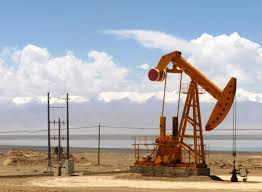By Romany Webb
 On Tuesday, September 11, EPA published proposed revisions to its New Source Performance Standards (2016 standards) for new and modified sources in the oil and natural gas sector. The standards, which were finalized in June 2016, formed a central plank of the Obama administration’s strategy for reducing methane emissions. EPA estimated that, as originally adopted, the 2016 standards would reduce methane emissions from oil and natural gas operations by 510,000 short tons in 2025. The reductions were to be achieved by requiring operators to, among other things, reduce natural gas venting and flaring and accelerate the detection and repair of natural gas leaks. EPA is now proposing to make various changes to those requirements. Here are five important things to know about the proposed changes:
On Tuesday, September 11, EPA published proposed revisions to its New Source Performance Standards (2016 standards) for new and modified sources in the oil and natural gas sector. The standards, which were finalized in June 2016, formed a central plank of the Obama administration’s strategy for reducing methane emissions. EPA estimated that, as originally adopted, the 2016 standards would reduce methane emissions from oil and natural gas operations by 510,000 short tons in 2025. The reductions were to be achieved by requiring operators to, among other things, reduce natural gas venting and flaring and accelerate the detection and repair of natural gas leaks. EPA is now proposing to make various changes to those requirements. Here are five important things to know about the proposed changes:
1. EPA is proposing significant changes to the leak detection requirements in the 2016 standard. Natural gas is comprised primarily of methane, a highly potent greenhouse gas, which is released through intentional venting and accidental leaks. Seeking to minimize releases, in the 2016 standards, EPA required oil and natural gas operators to regularly survey their facilities for leaks. That requirement was strongly opposed by industry, which argued that that the surveys would be costly, and deliver only modest benefits. In response to those concerns, EPA is now proposing to change the survey requirements for certain system components, to allow longer intervals between inspections. The proposed changes are shown in the table below.
| System Component | Required Survey Frequency (2016 Standards) | Required Survey Frequency (2018 Proposal) |
| Well sites | Semi-annual | Annual |
| Low-producing wells | Semi-annual | Biennial |
| Compressor stations | Quarterly | Semi-annual or annual |
These changes will, if implemented, result in delays in leak detection. For example, under the 2016 standards, any leaks from low-producing wells would be detected within six months. However, under the 2018 rule, leaks could remain undetected for up to two years. EPA appears unconcerned about this possibility, reasoning that few leaks are likely to occur at low-producing wells, primarily because less leak-prone equipment is used at those wells. That finding is, however, contradicted by recent studies showing that low-producing wells are prone to leakage. In one study, analyzing natural gas production in the Marcellus Shale, median methane emissions from low-producing wells were found to be 85 times higher than those from high-producing wells.
2. EPA is also proposing changes to the leak repair requirements in the 2016 standard. Delays in leak detection, resulting from the proposed changes in survey frequency, will necessarily delay leak repair. This is problematic because studies show that leakage rates can increase over time if repair work is put off. Despite this, however, EPA is proposing to allow oil and natural gas operators more time to make repairs after a leak is detected. Under the 2016 standards, as originally adopted, operators would be required to complete all repair work within 30 days (except in cases of technical infeasibility or certain other circumstances). EPA is now proposing to relax that requirement. Under EPA’s proposal, operators would be required to make a “first attempt at repair” within 30 days, but would have up to 60 days to complete other repair work. It appears that the “first attempt” could be fairly minimal, with EPA indicating that “action [to] reduc[e] fugitive emissions,” rather than stop them, would be sufficient.
3. Delays in leak detection and repair will increase gas losses and associated methane emissions. EPA acknowledges that, by delaying leak detection and repair, its proposed changes to the 2016 standard will increase natural gas losses. Those losses represent a cost to producers as, if the natural gas were captured, it could be sold for an estimated $62 million (based on the value of total natural gas losses from 2019 to 2025, discount back to 2016$ using a 3 percent discount rate). They also impose costs on society, leading to methane emissions, which contribute to climate change. EPA estimates that, as a result of its proposed changes to the 2016 standards, methane emissions from oil and natural gas facilities would increase by 380,000 to 480,000 short tons between 2019 and 2025 (depending on whether semi-annual or annual surveys are required for compressor stations). That is equivalent to a 4 to 5 percent increase in total industry methane emissions (based on EPA data from 2016).
4. EPA has underestimated the climate impacts of increased methane emissions. Methane is a highly potent greenhouse gas, trapping approximately 87 times more heat in the earth’s atmosphere than carbon dioxide in the first 20 years after it is released, on a pound-for-pound basis. Any increase in methane emissions will, therefore, have a significant climate impact. EPA has valued the climate impact of its proposed changes to the 2016 standard at $54 million (assuming a 3 percent discount rate). To calculate that figure, EPA used a discounted social cost of methane, which only accounts for domestic climate impacts. In the past, EPA has used a global social cost of methane, which accounts for both domestic and global impacts, because “[t]he impacts of climate change outside the U.S. . . . will also have relevant consequences on the United States and our citizens.”
5. EPA has downplayed other negative effects of its proposal. As well as the above climate impacts, EPA’s proposed changes to the 2016 standards could also have economic impacts, affecting employment in the oil and gas industry. EPA has recognized this, noting that there could be job losses in the leak detection and repair services sector, but concluded that they “will be slight.” EPA has not provided any evidence to support this conclusion, perhaps because the available evidence points in the opposite direction. Notably, past research suggests that the adoption of regulations targeting gas leaks has been a key driver of growth in the sector, and that weakening of those regulations could have significant negative impacts.
Romany Webb is a Research Scholar at Columbia Law School, Adjunct Associate Professor of Climate at Columbia Climate School, and Deputy Director of the Sabin Center for Climate Change Law.


